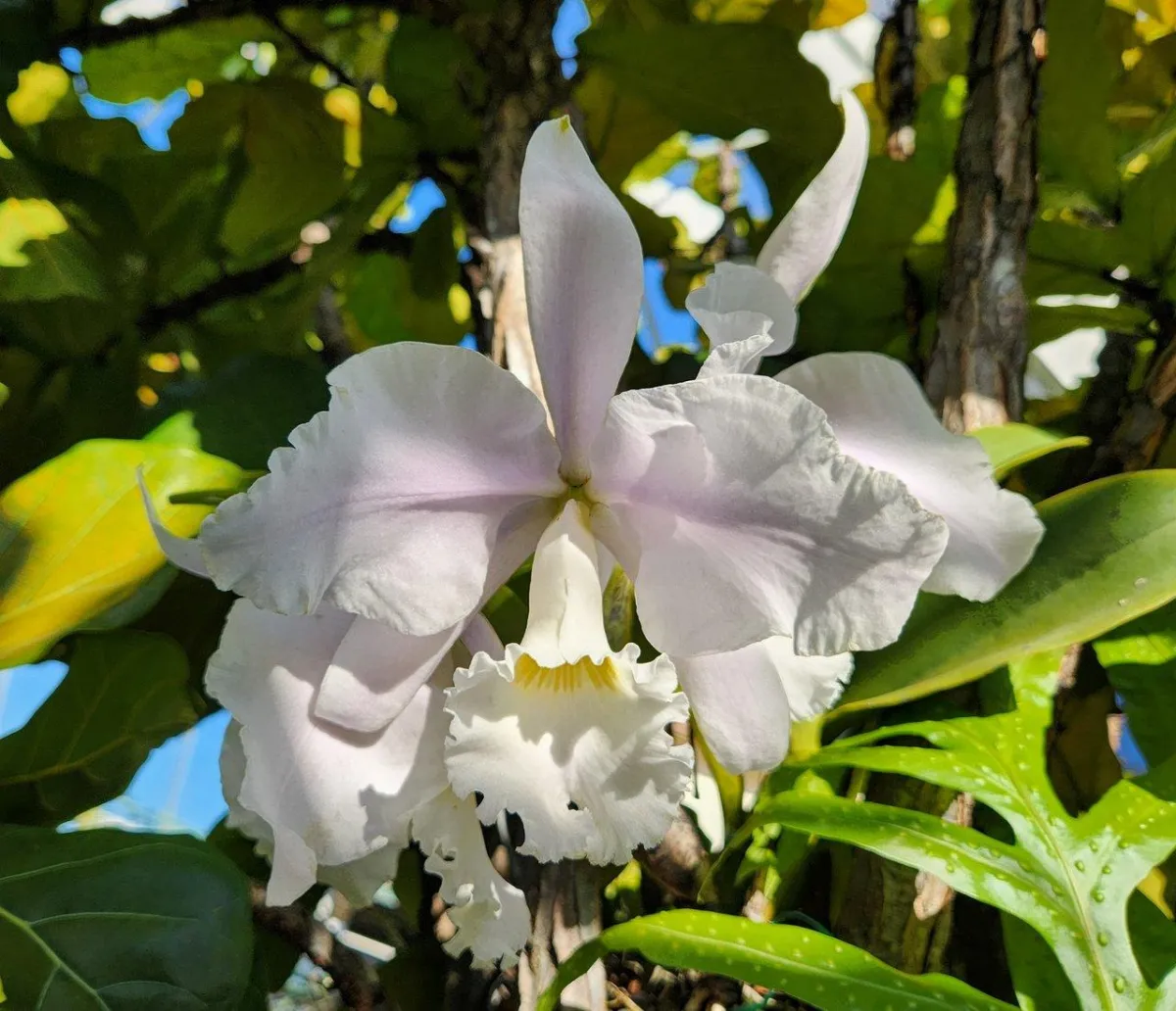
Enjoying Cattleya warneri fragance!
Cattleya warneri is a stunning orchid species highly regarded for its large, fragrant flowers and vibrant colors.
Here’s a detailed overview of its origins, characteristics, and growing requirements:
Origins
- Native Habitat: Cattleya warneri is native to Brazil, particularly in the southeastern regions such as the states of Minas Gerais and Espírito Santo. It thrives in the coastal mountains, where it grows on trees or rocks in bright, indirect light conditions.
- Altitude: This species is typically found at altitudes ranging from 600 to 1200 meters (approximately 2000 to 4000 feet).
Characteristics
- Flowers: The flowers of Cattleya warneri are notable for their size, often reaching up to 15 cm (6 inches) in diameter. They display a variety of colors, primarily shades of lavender, pink, and white, with a contrasting lip that can be darker and more vibrant.
- Fragrance: The flowers are not only visually appealing but also possess a pleasant, sweet fragrance.
- Blooming Season: This species usually blooms in the late spring to early summer.
- Growth Habit: Cattleya warneri is a sympodial orchid, which means it grows horizontally and produces new growths from the base of the previous ones. It has pseudobulbs, which are thickened stems that store water and nutrients, helping the plant survive dry periods.
Growing Requirements
- Light: Bright, indirect light is essential. Cattleya warneri can tolerate some direct sunlight, especially in the morning or late afternoon, but too much direct light can scorch the leaves.
- Temperature: This orchid prefers intermediate to warm temperatures. Ideal daytime temperatures range from 21°C to 27°C (70°F to 80°F), with slightly cooler night temperatures between 13°C and 18°C (55°F to 65°F).
- Humidity: Maintain high humidity levels, around 50-70%. Good air circulation is crucial to prevent fungal and bacterial infections.
- Watering: Water thoroughly when the growing medium is nearly dry. During the growing season (spring and summer), Cattleya warneri requires more frequent watering. In the rest period (fall and winter), reduce watering but do not allow the pseudobulbs to shrivel.
- Potting Medium: A well-draining medium such as a mix of bark, perlite, and charcoal is ideal. This ensures that the roots receive enough air while retaining some moisture.
- Fertilizing: Feed regularly during the growing season with a balanced orchid fertilizer, diluted to half strength. Reduce feeding during the rest period.
- Repotting: Repot every 2-3 years or when the medium breaks down. The best time to repot is after flowering when new growth appears.
Tips for Success
1. Monitor Light Exposure: Adjust the light levels if you notice the leaves turning yellow (too much light) or dark green (too little light).
2. Prevent Root Rot: Ensure the potting medium allows for excellent drainage to prevent root rot, a common issue with overwatering.
3. Maintain Humidity: Use humidity trays or mist the plant regularly if you live in a dry climate.
4. Inspect for Pests: Regularly check for pests such as aphids, mealybugs, and spider mites. Treat infestations promptly with appropriate insecticides or natural remedies.
By following these guidelines, you can successfully grow and enjoy the exquisite blooms of Cattleya warneri in your home or greenhouse.
Cattleya warnerii 'Pink Pastel'
Cattleya warnerii alba 'Canaima's Exquisite'

